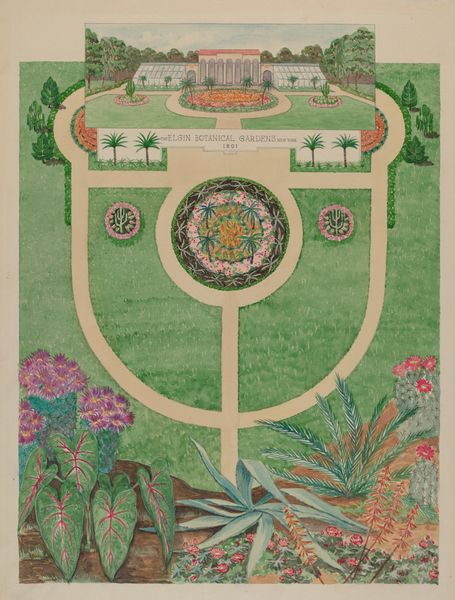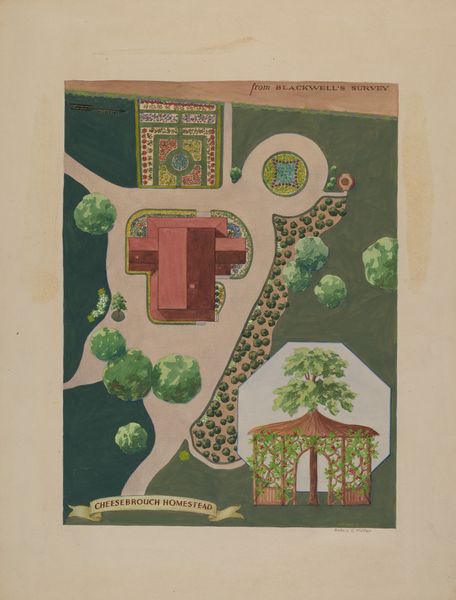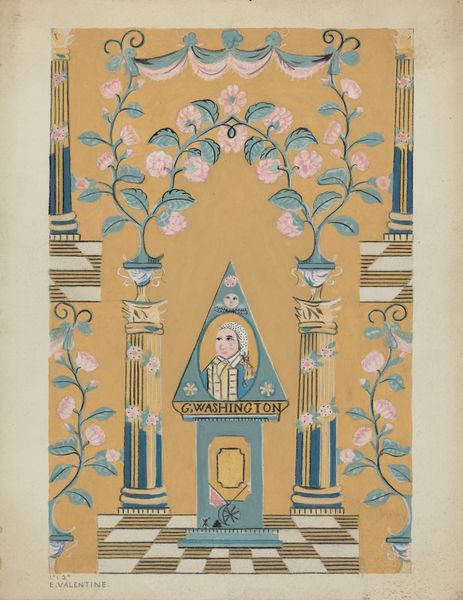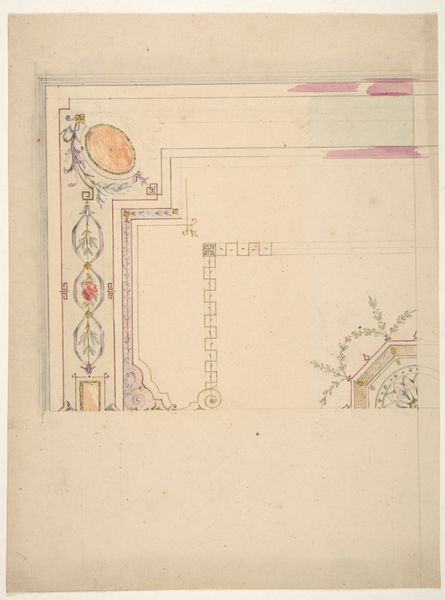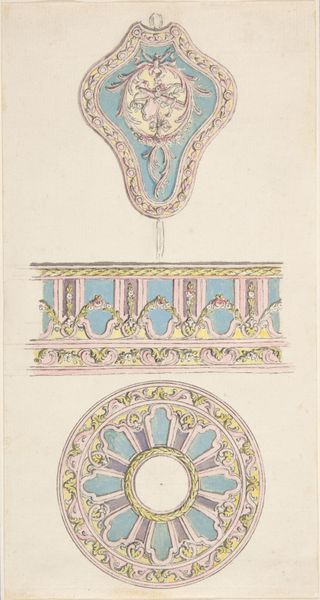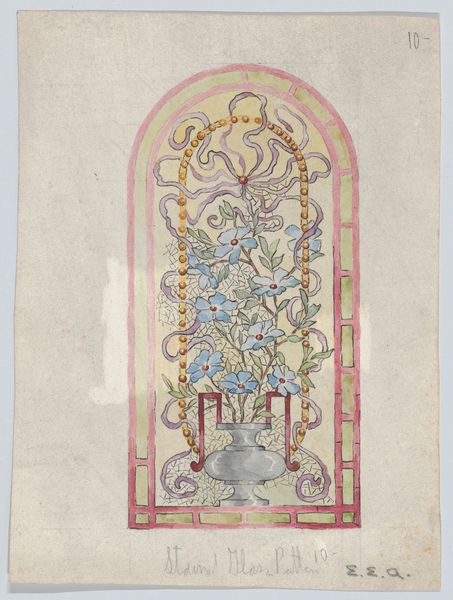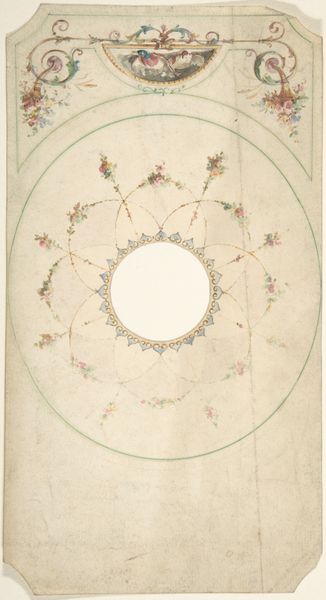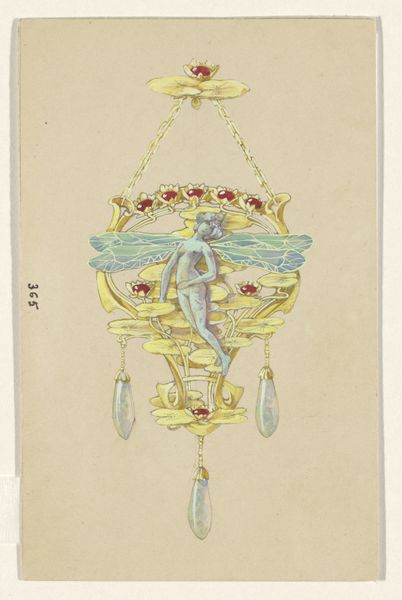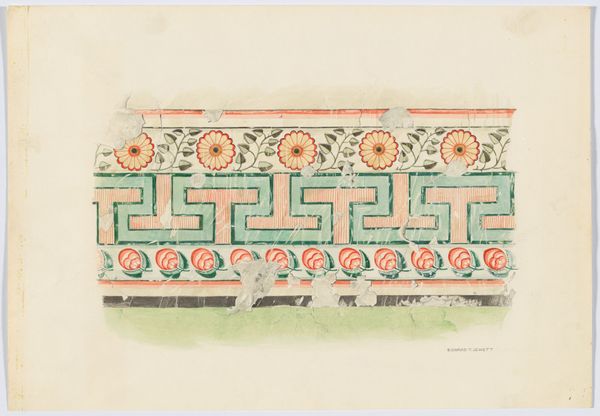
drawing, watercolor
#
drawing
#
water colours
#
landscape
#
watercolor
#
watercolor
Dimensions: overall: 30.7 x 23 cm (12 1/16 x 9 1/16 in.)
Copyright: National Gallery of Art: CC0 1.0
Editor: This watercolor rendering is entitled "Ingraham Residence," created by William Merklin around 1936. The layout seems quite unusual to me, it's not a straightforward depiction. What's your take on it? Curator: I notice immediately how Merklin has presented not just a depiction of the house but almost a design proposal. Think about the materials required: watercolor on paper, a relatively accessible medium, suggesting this was perhaps intended for a middle-class audience aspiring to this kind of domesticity. It almost looks like it's sitting on top of some plans below. Do you think that changes your read of it? Editor: It does, a bit! I hadn't considered it from that angle. Are you suggesting it was sort of aspirational architecture, democratized by the materials and medium? Curator: Precisely. The "Residence" element floats above the other design in what feels like two separate processes on one page. What's interesting is that Merklin uses accessible materials, leveling the playing field. The artistic process mirrors the societal changes toward greater access to the upper middle class. How do you think the architectural drawings below it emphasize those aspirations, in comparison to the home portrait? Editor: They make the possibility tangible somehow. It is a rendering *and* instructions combined. They seem almost symbolic of domestic potential, like it needs to sit upon solid groundwork for its actualization! Curator: I'm with you. It's less about idealizing elite life and more about visualizing the labor and the social structures that made this lifestyle attainable – or at least, aspirational – for a broader segment of society. Editor: That is an insightful viewpoint! I definitely have a new appreciation for the layered meanings within seemingly simple watercolors! Thanks! Curator: Absolutely! Thinking about art in terms of material and the means of production really opens up some fascinating questions.
Comments
No comments
Be the first to comment and join the conversation on the ultimate creative platform.

